Mediterranean diet Mediterranean diet
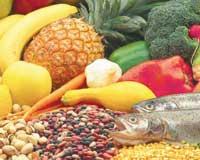
Only a small sample is superior. And it is that the benefits of the Mediterranean diet are exalted in recent times by anyone, anywhere, and almost anywhere. But, what exactly is that Mediterranean diet in everyone's mouth? What are its characteristics? What benefits does it bring us? And with our customs and diets of always what? Today I will try to answer these kinds of questions and others.
What is the Mediterranean diet?
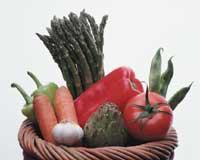
This is how, for centuries, the food of the countries that inhabit the shores of the Mediterranean Sea is known. And although the appointment is relatively new (Professor Ancep Keys was the first to define it clearly, XX. In the nineteenth century), as can be seen in ancient texts, in all the villages that are located on the coast of this sea are similar customs, both of lifestyle and of way of eating.
They are European countries, such as Spain, France, Italy, Cyprus, Greece, Portugal, although their coast is Atlantic, Yugoslavia, Albania or even Monaco, as well as countries such as Morocco, Tunisia, Malta, Libya, Israel, Jordan, Egypt and Syria.
What are the characteristics of the Mediterranean diet?
This diet has been complemented over time by the influence of all the peoples who have lived and have passed through these lands: Iberian, Celtic, Greek, Roman or Arab.

Greeks and Romans were the ones who laid the foundation for what we now know as the "Mediterranean trio": bread, oil and wine, three ingredients that have always existed in the culture of these countries.
For example, for Homer being a trade was synonymous with being human. And these ingredients survive with Christianity under the image of bread. Subsequently, as a result of relations with the Germanic peoples, meat or meat was introduced into food, and finally the Arabs gave their touch with new foods such as artichokes or eggplants, or as rice or pasta. After the discovery of America, it took its last important contribution that we now know as a Mediterranean diet, from which came, among others, potato, pepper or tomato.
In view of this brief historical journey, it is clear that one cannot speak of the Mediterranean diet as if it were something unique or monolithic, since each country gives its own touch. But there are some common or general characteristics:
- Olive oil as the main source of fat or fat.
- High consumption of foods rich in fibres (fruit, vegetables, legumes or legumes and vegetables). Salads are taken in all meals and the fruit is the final dish or dessert. Legumes will be taken at least twice a week and three or four pieces of fruit a day.
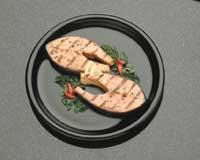 Instead of protein foods, fish or farm birds predominate in the Mediterranean diet.
Instead of protein foods, fish or farm birds predominate in the Mediterranean diet. - The kitchen preparations are kept but simple: cooked or roasted (baked, grilled).
- Strong textures: bread, fruit, vegetables, nuts and raw vegetables. The consumption of fresh bread, rice and pasta is very high compared to other types of food.
- Pasta and rice dishes three or four times a week.
- Low consumption of protein foods such as red meats, which are replaced by fish and farm birds such as chicken.
- They are used vegetables or onions, as well as species and aromatic herbs.
- They like acids: vinegar is abundant in salads, as well as lemons and other citrus fruits in general. Orange is one of the most appreciated fruits.
- It came in the main meals but moderately (about 150 cm3 in each meal).
- Fresh and seasonal products are used.

After reading the above, instead of talking about the diet, we should talk about the Mediterranean life, since it is not just a way of eating, but a complete way of life, with customs like siesta and works of great physical activity (agriculture, especially, historically). However, as for the level of activity of the work, the amounts of food were not excessively abundant.
What benefits does this diet offer us?
It protects us from cardiovascular diseases and certain types of cancer. However, although the Mediterranean diet is ancient, its benefits were known a few years ago.
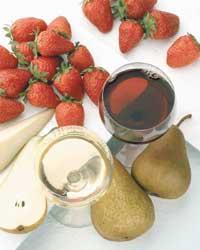
In the sixties, financed by the Queen Guillermina Foundation of Holland, and under the direction of Professor Ancel Keys, a large study known as the "study of the seven countries" was carried out, in order to determine whether the different types of food of the United States, Japan, Finland, Holland, Greece, Italy and Yugoslavia were not related to the prevalence or appearance of cardiovascular diseases. The research lasted for ten years and its results were presented in the early eighties.
This study showed, for example, that the number of cardiovascular disease deaths was much higher in the US or Finland than in countries like Greece or Italy (with the best results at this point in Crete). These differences were attributed to the way of life and food of the coastal countries of the Mediterranean. Other later studies have related this form of feeding to other cancers (e.g., breast cancer is associated with excessive fat or fat intake).
Has the old Mediterranean diet changed?

Yes, of course, as life has been changing. Women have increasingly joined the world of work (currently between 40% and 60% of women work outside the home). Today there is not so much time to dedicate to the kitchen as before, and many times the purchases are not made on a daily basis, so fast food is consumed more and more to the detriment of fresh foods.
The urban population has also grown considerably, which means a decline in the rural population. The industrialization of food has also changed and has been very complicated thanks to the large distribution chains. For this reason, the number of people who can have more food and better conditions is increasing. This option of food offered to us by our grandparents has been largely lost, it is true, but in the diet there are much more possibilities, hygiene has also increased and improved as far as food is concerned, and the toxicities have decreased.
As a result of these changes, and thanks to the strength of the media, to the curiosity that awaken the new things and the ease that we have today to exchange knowledge and customs with other population groups, the Anglo-Saxon diet, richer in animal fats than ours, has entered into force in our cooking habits: they are burgers, dishes prepared with liquid cream or butter, or the foods and sauces that have never been used until now.
Is it difficult to maintain our good habits?
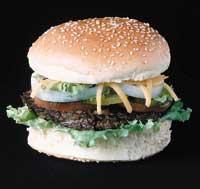
It is not so difficult. If we want and organize something, of course. Some foods, such as legumes, seem quite difficult to prepare, but in the pressure cooker they can be prepared easily. Either legumes can be used already macerated if on the eve we forgot to put them in the water.
Today we know perfectly that legumes and cereals at once (beans with rice or chickpeas with wheat…) or an all salad (lettuce, tomato, carrot, egg, tuna, etc. ), which together with olive oil and bread, are a food that satisfies our needs from the nutritional point of view. These foods, so easy to prepare in our kitchens, and a couple of pieces of fruit to finish the meal, are a good meal, taking into account that the work we do today is usually quite sedentary, and therefore the amounts of food to be taken should be lower than those received by our ancestors.
Will our diet disappear?
No, as long as we all try to maintain ourselves and do not forget the benefits we can report. Thanks to the expansion campaigns, in other countries, the advantages of our food form have begun to be mentalized with the aim of reducing the consumption of animal fats.

But to prevent the appearance of cardiovascular diseases, in addition to making a poor diet in animal fats and consuming adequate amounts to our needs, it is important to perform a physical exercise that allows us to be in shape and burn those extra calories. This exercise, if it is adapted to our age, will help us to stay in the right weight.
It is necessary, therefore, that the previous ideas are extended above all among young people, fostering our traditional cuisine and claiming the consumption of fruits and vegetables on the one hand and the attachment to physical exercise on the other, facing the imminent food.





